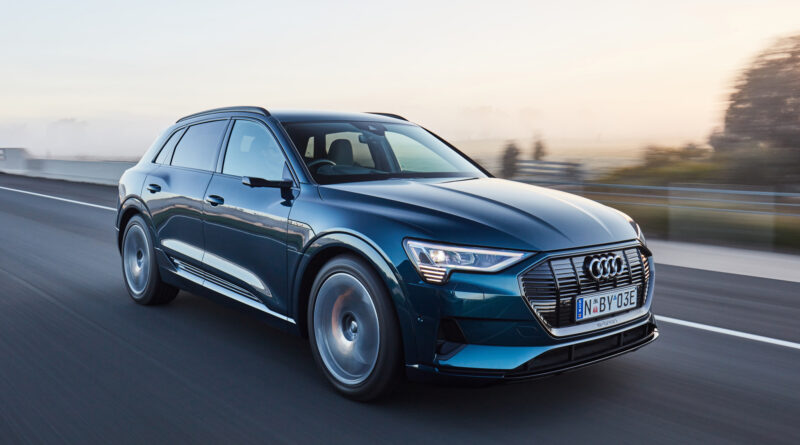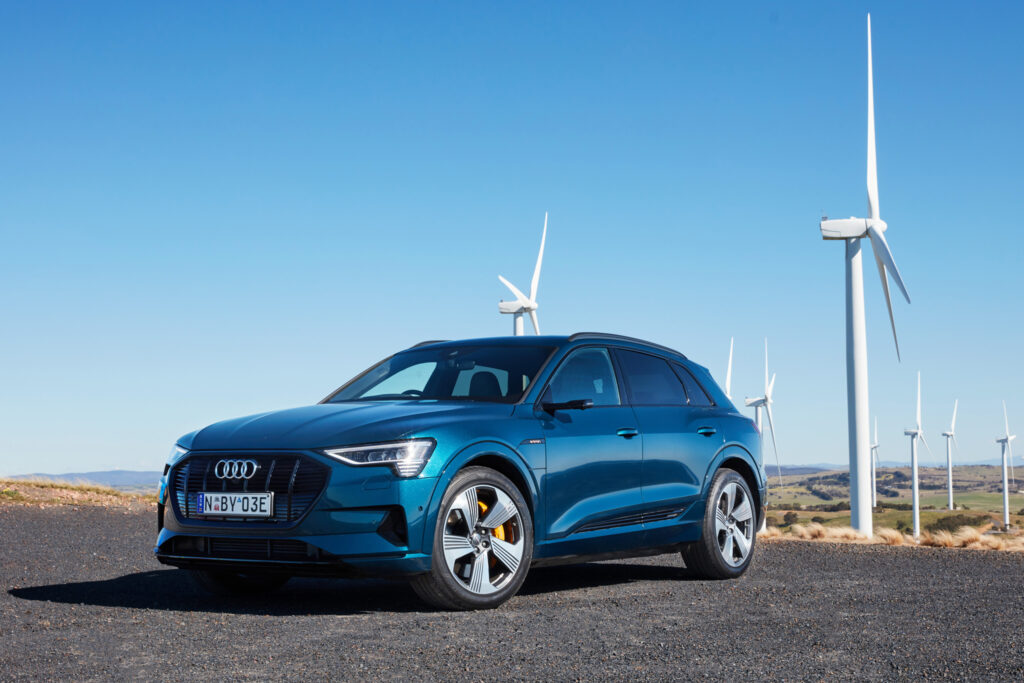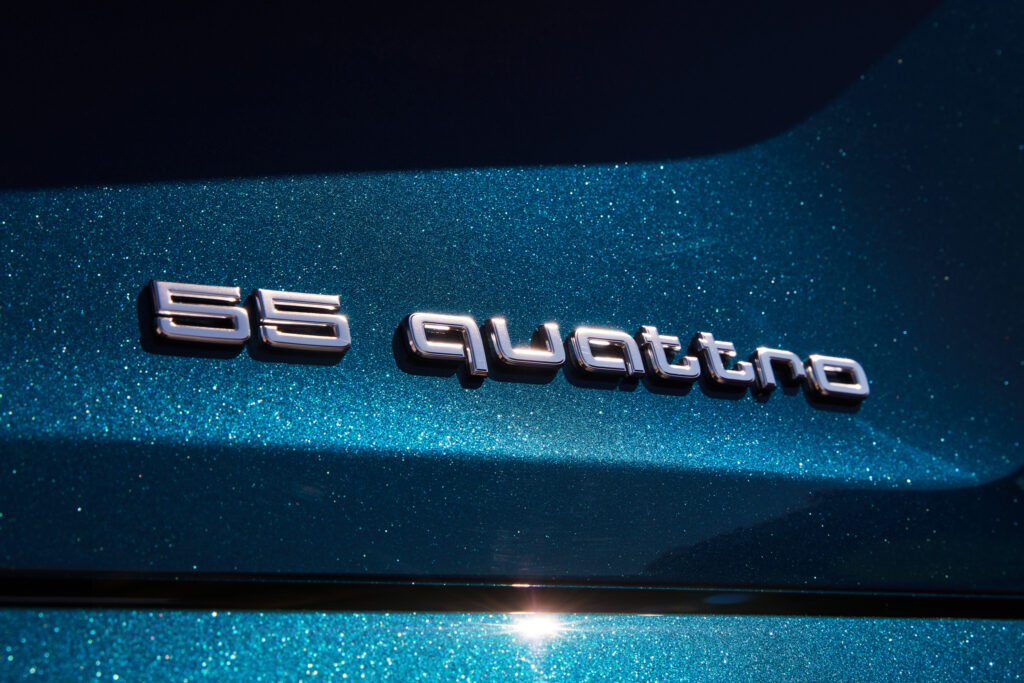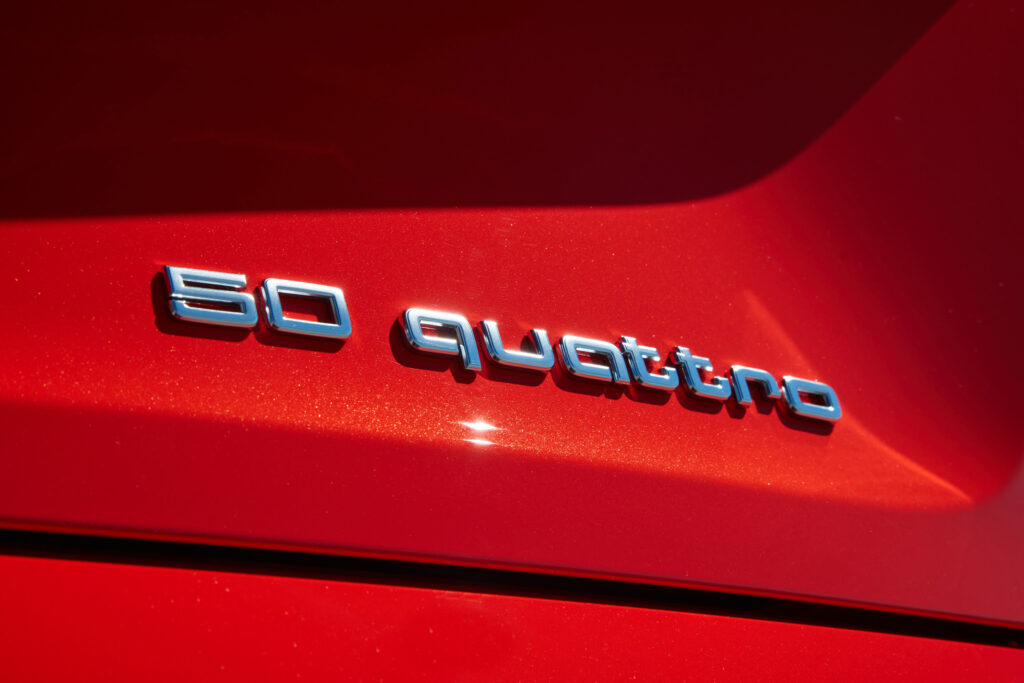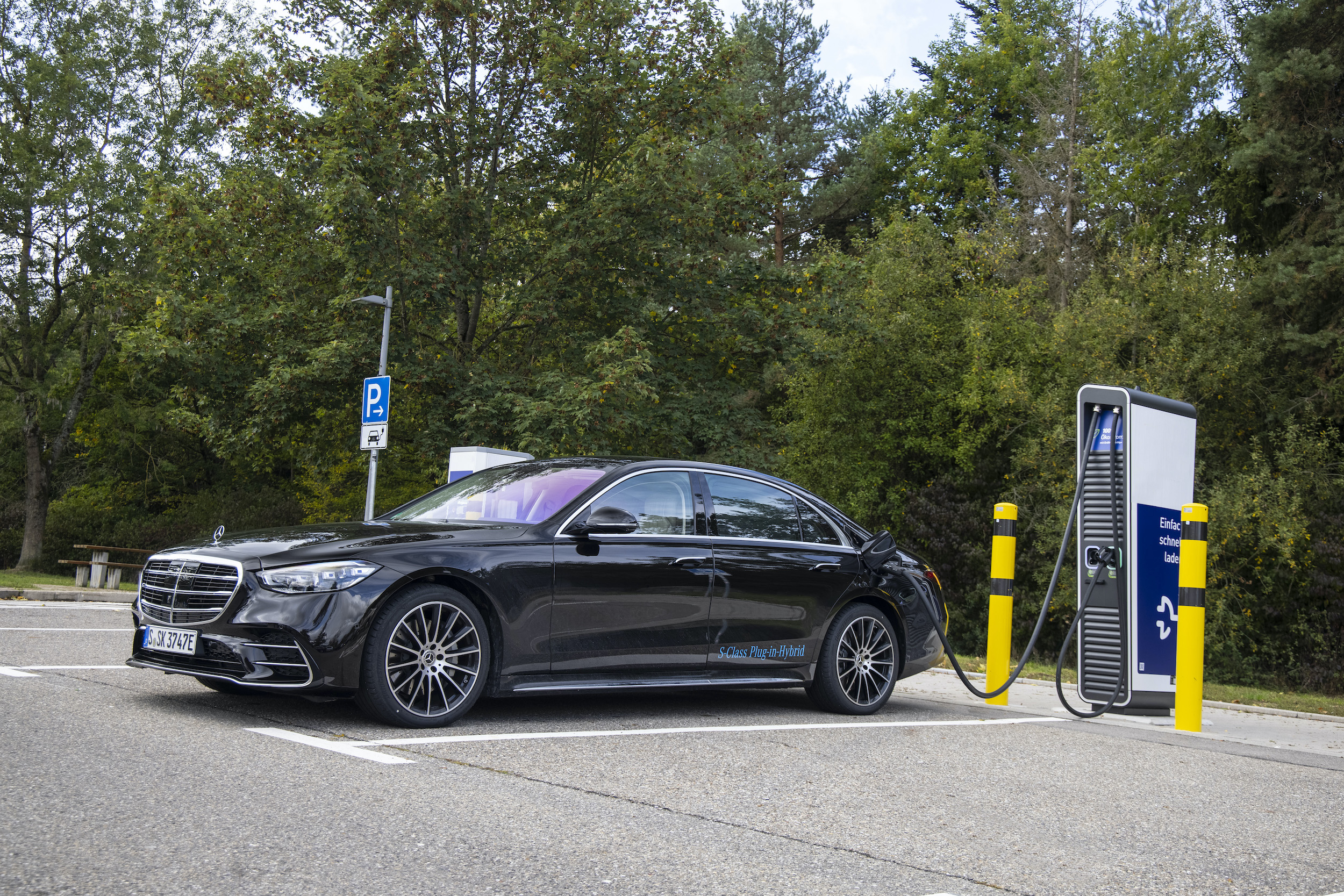Audi e-Tron 50 and 55 Quattro review
The Audi e-Tron has landed – and on the surface it is impressively normal, right down to its choice of body styles and models (there are many), its familiar switchgear and its ability to tow up to 1.8 tonnes.
Want the latest EV news and reviews delivered to your inbox? Subscribe to our weekly newsletter!
As Audi’s first battery electric vehicle (or BEV), the e-Tron needs to come out swinging. It has some catching up to do against its most obvious rivals, such as the Jaguar I-Pace, Mercedes-Benz EQC, Tesla Model X and upcoming BMW iX3.

But it arrives with an interesting offer and more choice than any other EV currently on sale in Australia.
Value
Like all EVs, the e-Tron is more expensive than an equivalent ICE machine.
But it arrives with a tempting after-sales proposition: all servicing and public fast charging (via the Chargefox network) is included for the first six years of ownership. Compared with petrol or dieel power that’s a saving of something like $5000-$10,000.
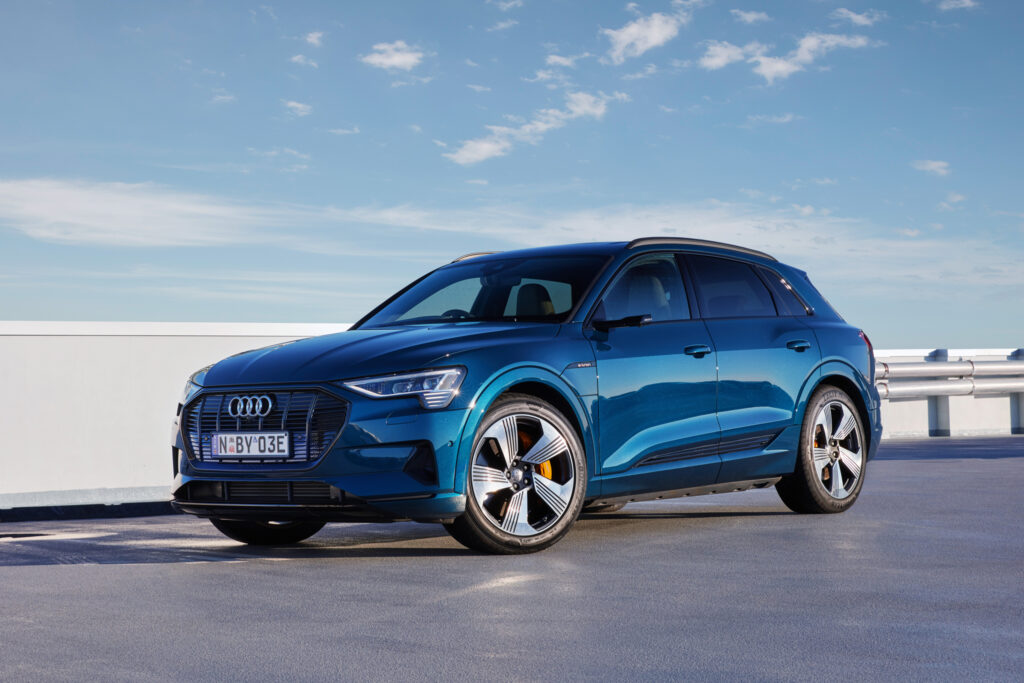
Theoretically, all you would need to pay for is six years is registration and insurance.
As for the price, it starts at $137,100 plus on-road costs (at least $10K) for the e-Tron SUV or $148,100 for the e-Tron Sportback.
That is for the 50 model, which comes with a 71kWh battery pack and two electric motors combining to make 230kW and 540Nm.
There’s a long list of standard kit, including smart key, powered tailgate, heated front seats, dual-zone ventilation, 10-speaker audio, 12.3-inch digital instrument cluster and 20-inch wheels. There are also dual infotainment touchscreens in the centre, a 10.1-inch upper screen and 8.6-inch lower one. Apple CarPlay and Android Auto are also part of the deal.
Sportback models get a head-up display, 21-inch alloys, sports seats, a higher grade of leather and the S-Line exterior styling package for a more aggressive look.

Audi e-Tron 50 Sportback 
Audi e-Tron 50 Sportback 
Audi e-Tron 55 
Audi e-Tron 55 SUV 
Audi e-Tron 50 Sportback
Safety is also well catered for with plenty of active assist systems (see below for more details).
Step up to the 55 model and the battery is 95kWh and outputs swell to 300kW/664Nm. With identical equipment levels between the 50 and 55, the jump to the bigger battery and more powerful electric motors adds $9000.
Inside the e-Tron
Utilising a dedicated EV architecture underneath means no compromises, something most noticeable in the back seats.
Instead of a tall transmission tunnel, there’s only a tiny dimple in the centre of the floor, meaning the person in the middle doesn’t have to argue for foot space.

Those on either side also have generous knee room.
While the Sportback has a smidge less headroom than the SUV, it’s still thoroughly respectable and will keep all but the vertically challenged content.
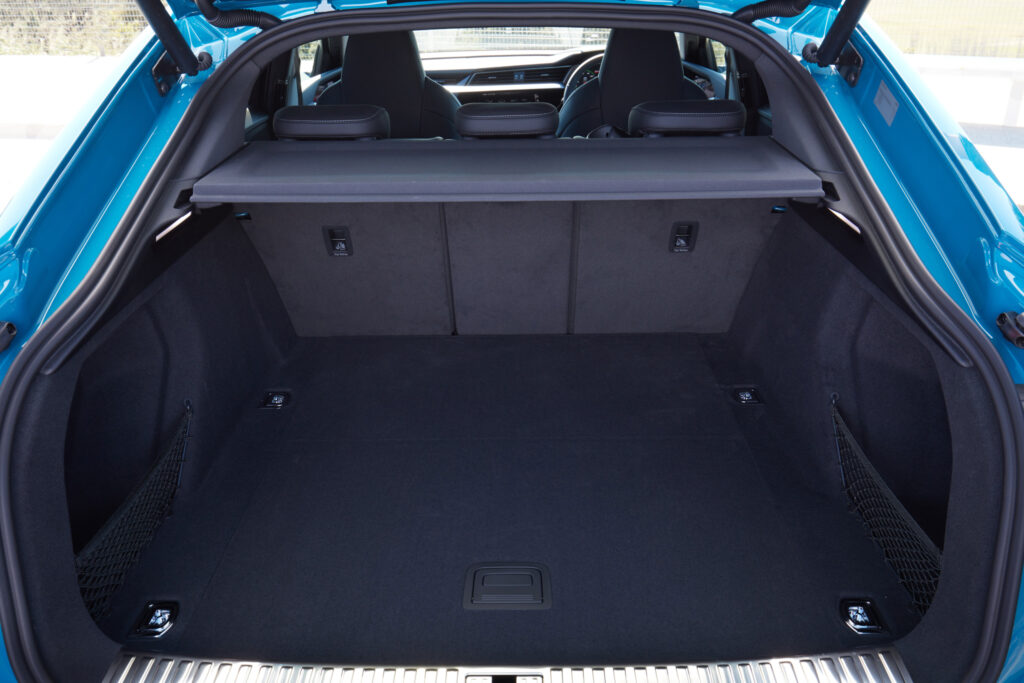
The boot floor is relatively high but long and wide. There’s a small underfloor storage binnacle (alongside the space saver spare tyre) and 40/20/40 split-folding back seats to maximise luggage space.
Up front is a 60-litre cavity perfectly sized for the charging cables.
Up front is a plethora of screens, lights and buttons.
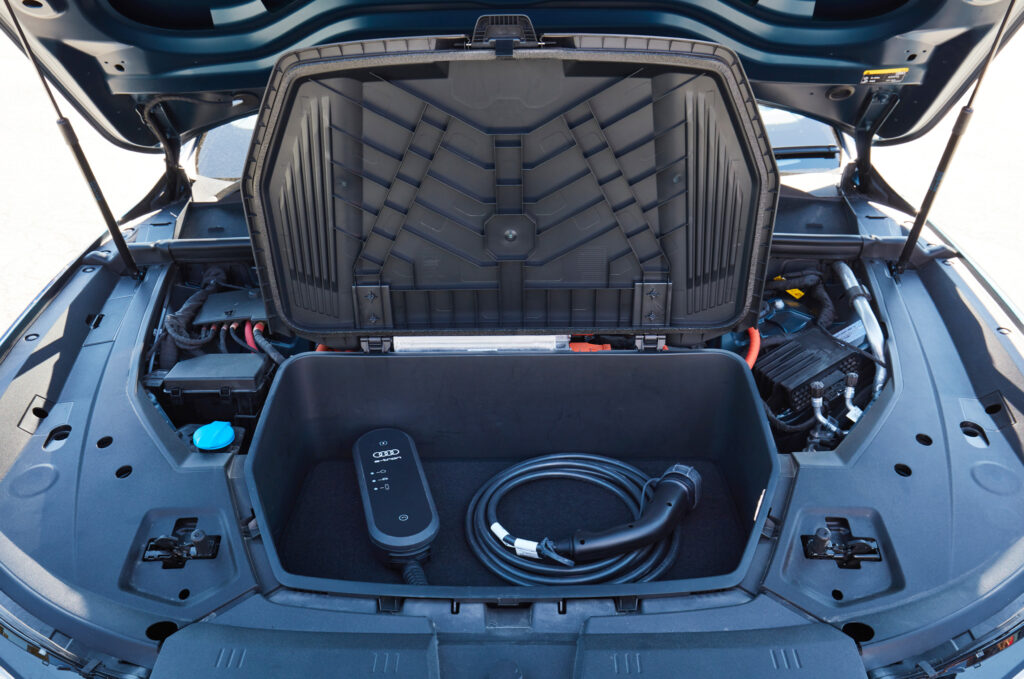
But it’s all in keeping with anything else Audi. There’s plenty of familiarity between the dash of the e-Tron and the A6/A7.
That includes the 12.3-inch instrument cluster, which can display Google maps navigation around the core vehicle information. Instead of a tachometer there’s a power gauge, but otherwise is par-for-the-course Audi.
There’s also a 10.1-inch main infotainment screen to take care of audio, navigation and most vehicle settings.
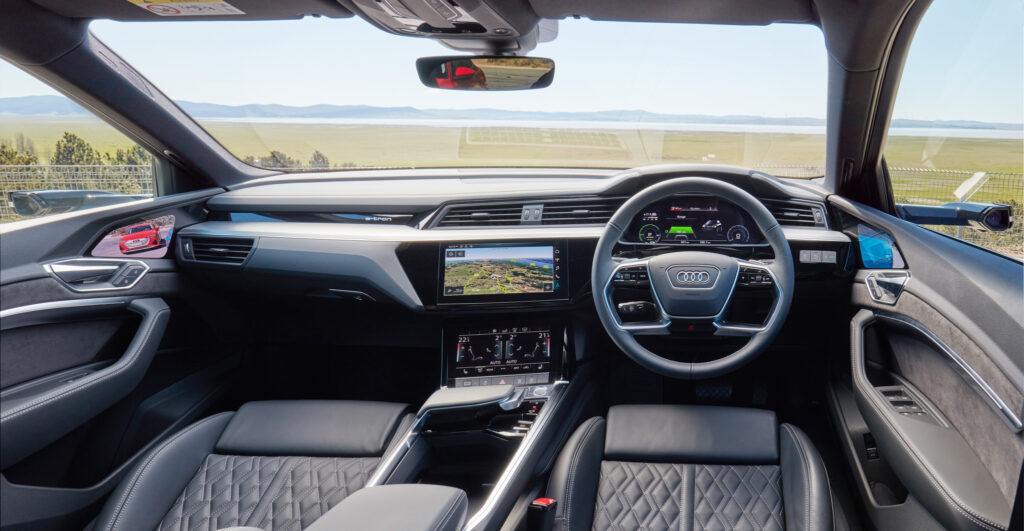
The lower 8.6-inch touchscreen is predominantly devoted to the ventilation settings, along with programmable favourites.
The biggest difference with the e-Tron is the gear selector. A fixed palm rest is flanked by a large switch that toggles forward or backwards to determine the direction of travel. It’s different, but it works.
Finishes and attention to detail is fantastic and those with a flair for design can customise things to their liking.
Performance and efficiency
First, some numbers.
The e-Tron has two electric motors, one for the front wheels and one for the rears; the rear motor is slightly larger than the front, so produces more power.
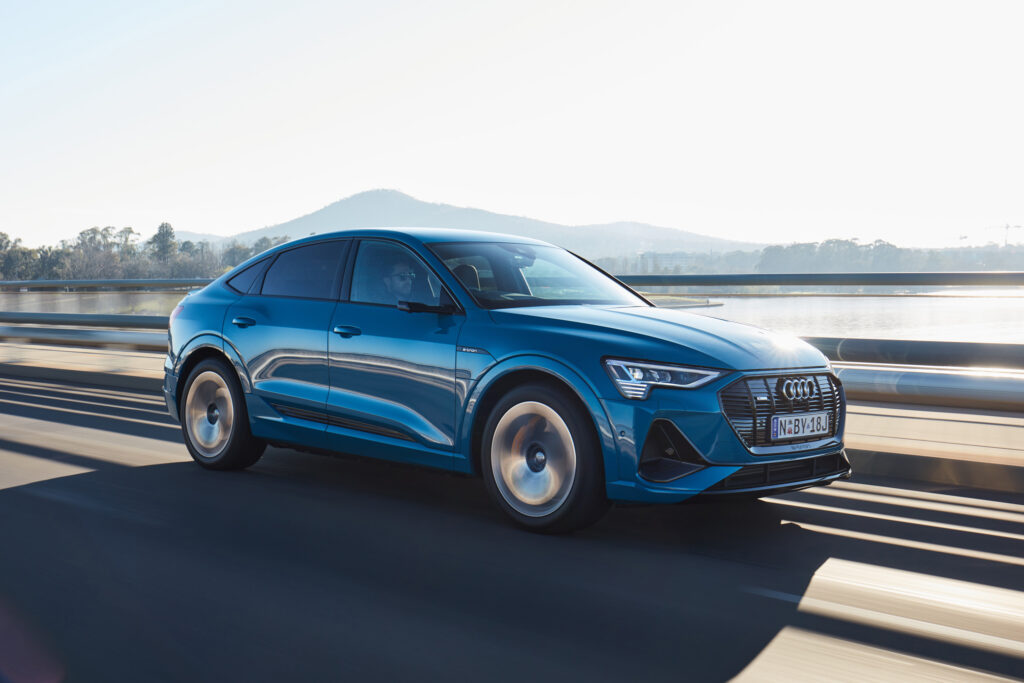
In the e-Tron 50 they combine to make 230kW and 540Nm, enough to dispose of the 0-100km/h dash in 6.8 seconds.
The e-Tron 55 has larger motors than its 50 sibling and steps those peak outputs up to 300kW/664Nm.
However, if you select D for Drive you’re only given access to 265kW, making for a 0-100km/h time of 6.6 seconds.
Choose S for Sport mode and the full 300kW comes on tap, lowering the benchmark acceleration time to 5.7 seconds.
It’s odd that Audi chooses to make the peak power available only in that S mode. Ultimately your right root controls how much power you direct the car to give you, so why not just allow the full 300kW in all modes?
In that Sport mode there’s a far more sensitive throttle, making for more of a jolt and associated head movement if you prod the accelerator pedal.
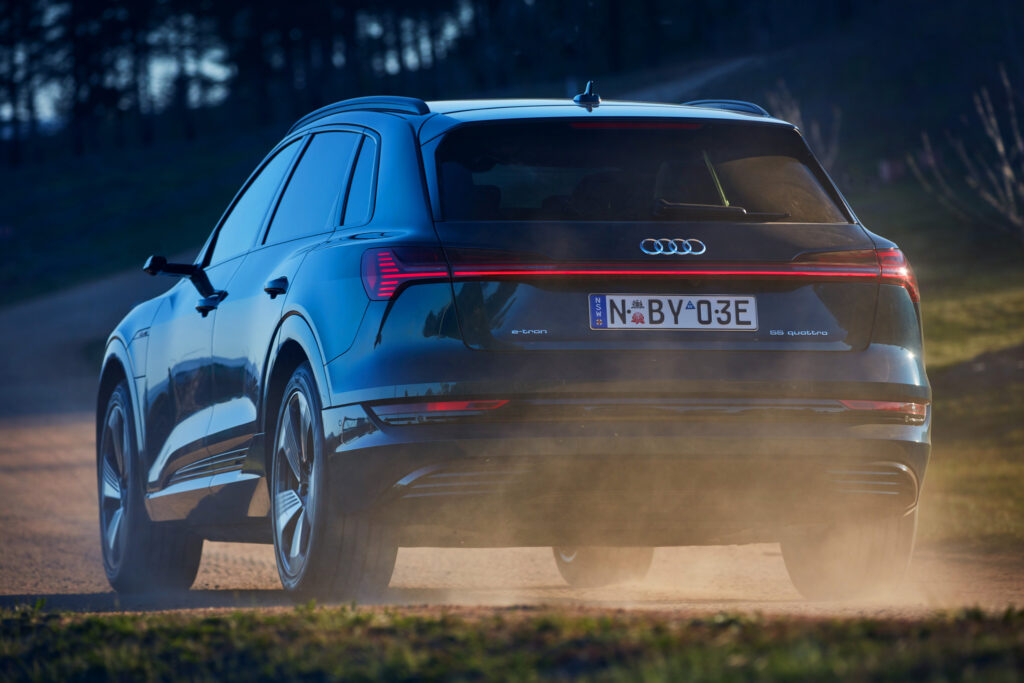
It’s more progressive in D.
The level of regenerative braking can be selected by the driver using paddles on the steering wheel. Tap the left paddle and you can choose between mild and more aggressive. Or you can just allow the car to coast, which works well for country touring.
The e-Tron 50 isn’t quite as snappy in outright acceleration, but it still has that lovely, accessible torque that makes for swift and easy changes of pace.
How far you’ll go depends on which model you buy.
The e-Tron 50 gets a 71kWh battery while the e-Tron 55 gets 95kWh.
Audi claims around 300km for the 50 and 400km for the 55. Our drive was mainly at 80-110km/h, which are the sorts of speeds an electric vehicle uses more electricity pushing air out of the way.
So the 400km claim was optimistic, but somewhere near 350km seemed thoroughly achievable. And around town you should extend that range further through regenerative braking and lower speeds.
Charging the Audi e-Tron
The e-Tron has charging ports on either side of the car. Press a button and a door drops down revealing a Type 2 AC charging plug on either side of the car. Each will accept up to 11kW.

The one on the driver’s side extends into a CCS fast-charging DC plug. For the 50 models it’ll take 120kW of charge, while the 55 ups that to 150kW.
But it’s the battery management and software that are arguably more impressive. A 22-litre cooling system (which also cools the inverter and electric motor) maintains a battery temperature of between 25 and 35 degrees Celsius.
Audi says that allows the e-Tron to maintain the maximum DC charge (120kW and 150kW respectively) for longer. So while it may not accept a peak charge as high as some EVs (including the upcoming Porsche Taycan, at 270kW), Audi says the ability to hold close to 150kW for longer lowers charging times.
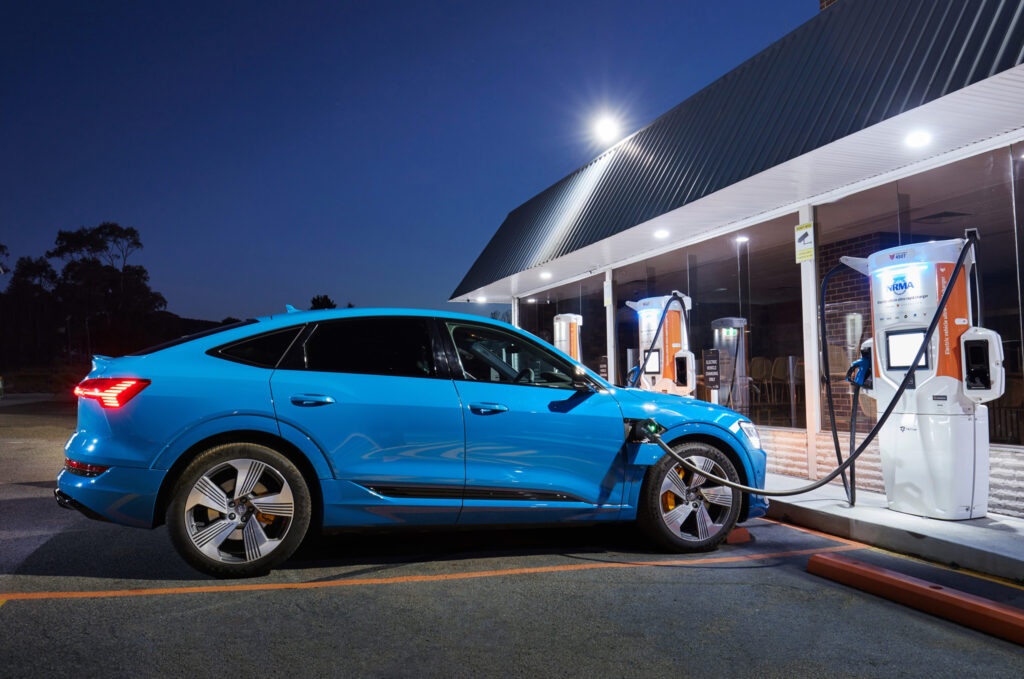
We tested it at an ultra-rapid charger and saw the car accepting 149kW (or thereabouts) for at least 15 minutes (we didn’t analyse the entire charge).
It means a 0-80 percent charge should take 30 minutes, with another 15 minutes for the final 20 percent to take it to a full charge.
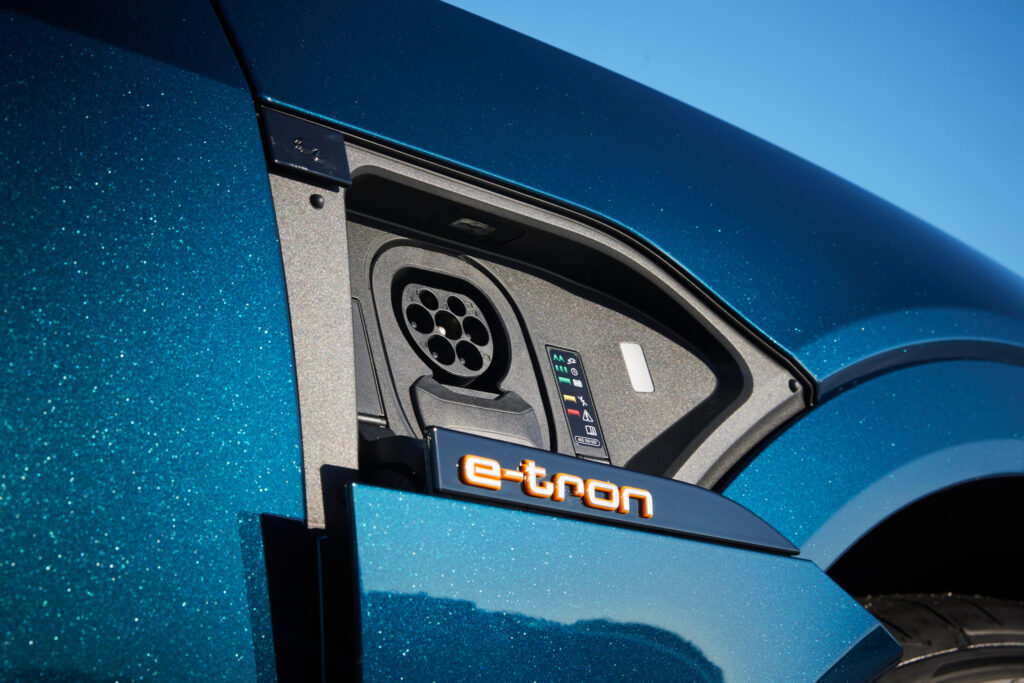
There’s also some innovation with the AC charger. Instead of being fixed to the wall at home it’s portable, able to be used on other chargers when you’re out and about. Then you can hang it back on the wall when you get home.
Ride and handling
Quattro all-wheel drive sets the foundations for an athletic and engaging vehicle. With more drive sent to the rear wheels (from the larger motor) it’s designed to give a rear-biased sporty flavour.
But the overwhelming sense is how easily it diverts drive to the road.
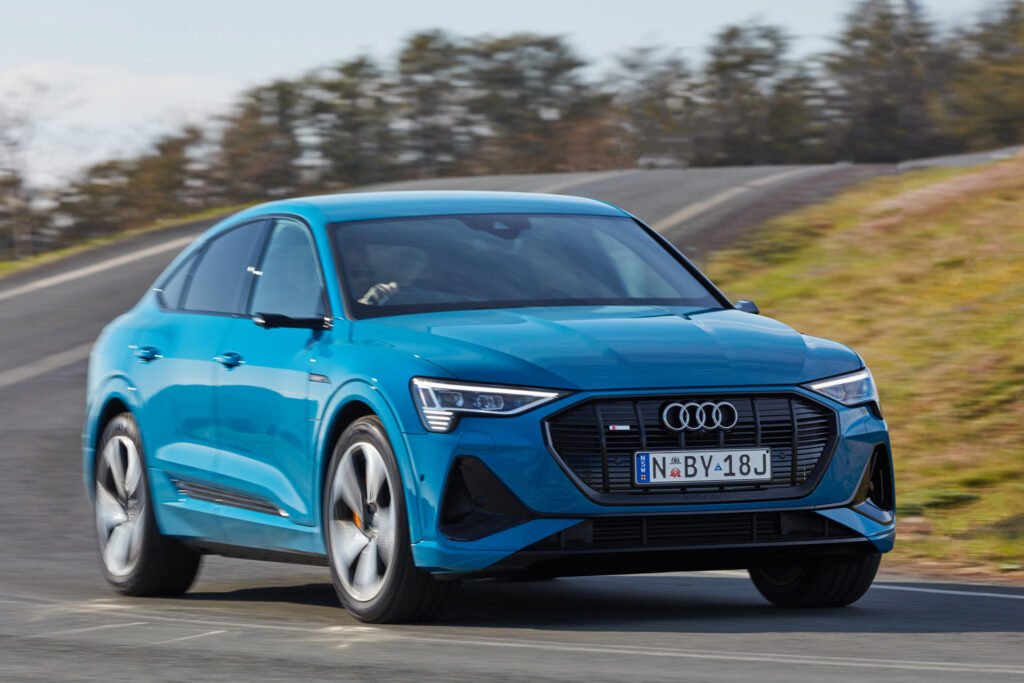
There are up to 700kg of batteries (as part of the circa-2.5-tonne kerb weight), which means lots of weight down low.
Throw it at a corner and there’s not only loads of grip but a planted feel. It’s the sort of car that relishes some spirited driving.
We only drove cars on 21-inch wheel and the ride quality was adept at disposing of bumps, at least over most surfaces. Large undulations at country road speeds were beautifully controlled and comfy. Repeated smaller bumps at city speeds were dealt with less convincingly.

The e-Tron is near-silent apart from the occasional hint of wind noise at freeway speeds and some minor whining from the electric motors.
Fluid steering and progressive brakes add to the driving nous.
Party trick
No mirrors is one of the big talking points with the e-Tron.
It’s the first car to go on sale in Australia with the option of cameras instead of side mirrors. They come with triangular 7.0-inch OLED screens in the upper forward corner of the door.
They’re a $3500 option on their own, although most people will likely go the whole hog and grab the Premium Pack (which adds more gear).
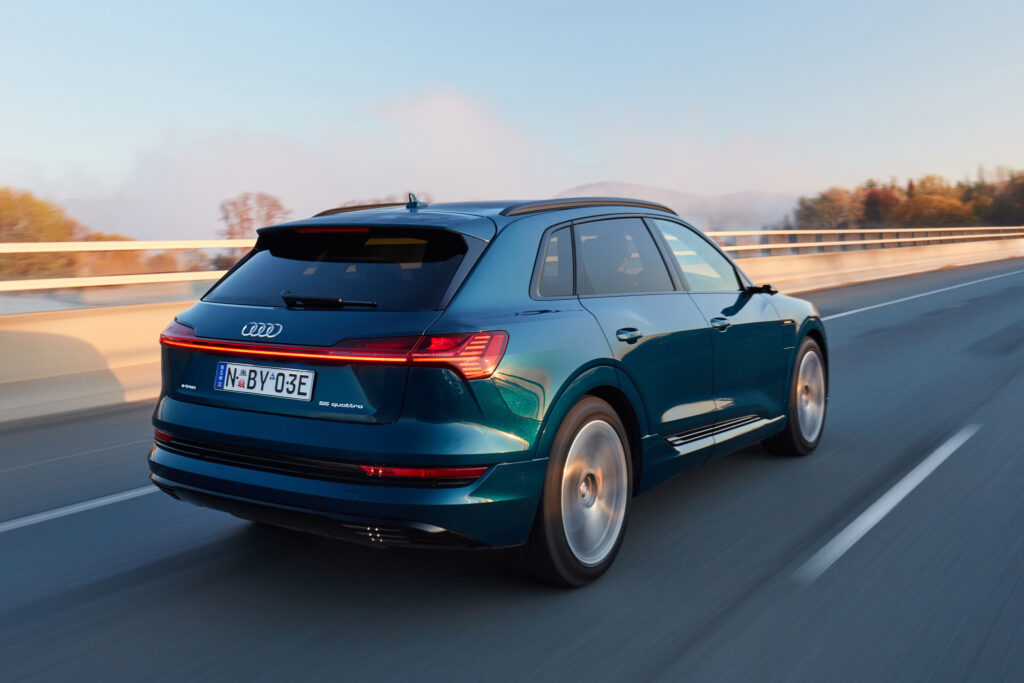
So, why bother?
Those Virtual Mirrors, as Audi calls them, are claimed to give better visibility in low light and rainy weather. We’ll test that more when we spend more time with the car.
They also reduce aerodynamic drag, taking the drag coefficient from 0.28 to 0.27. Audi estimates it will add 4-5km of additional range between charges.
But they’re not all good news. The mirrors take plenty of getting used to, in part because of the position of the screens. The screens are lower than where you’d look for the mirrors. It means an unnatural look lower down the door and taking a fair chunk of your peripheral vision out of the equation.
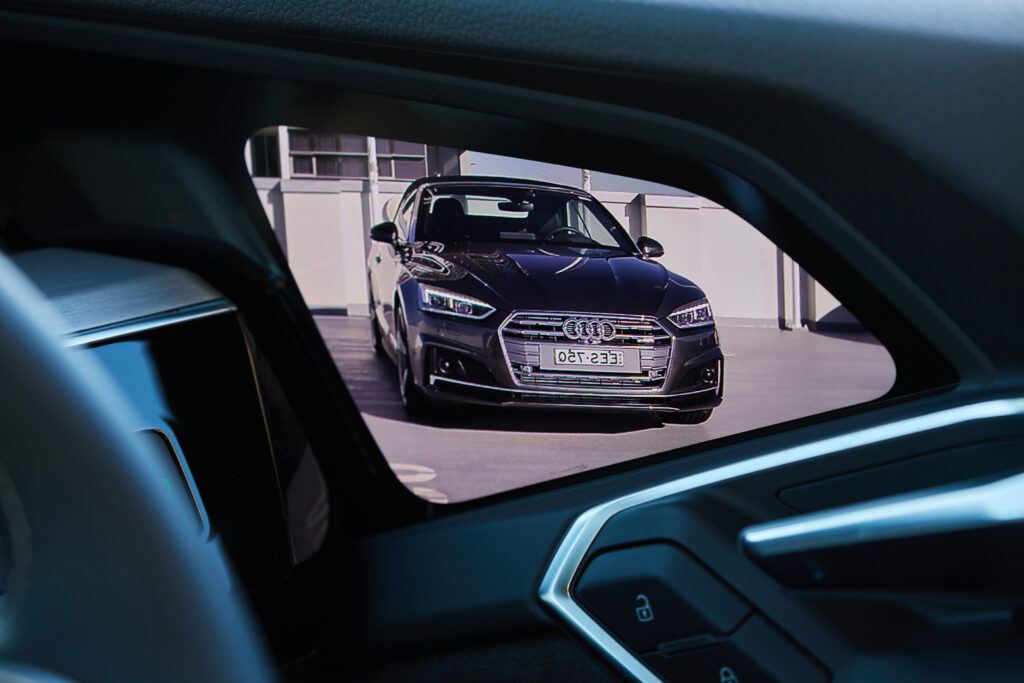
There’s also no way to temporarily widen the field of view by moving your head closer to the mirrors.
So, best save your money and stick with old school mirrors.
Safety
As with the list of standard equipment, there’s little missing from the safety artillery, something that helped the e-Tron get a five-start ANCAP rating.
There’s autonomous emergency braking (AEB) up to 250km/h with cyclist and pedestrian detection up to 85km/h. Those same sensors are used for Intersection Assist, which monitors oncoming cars and can perform an emergency brake if the car determines a collision is likely.
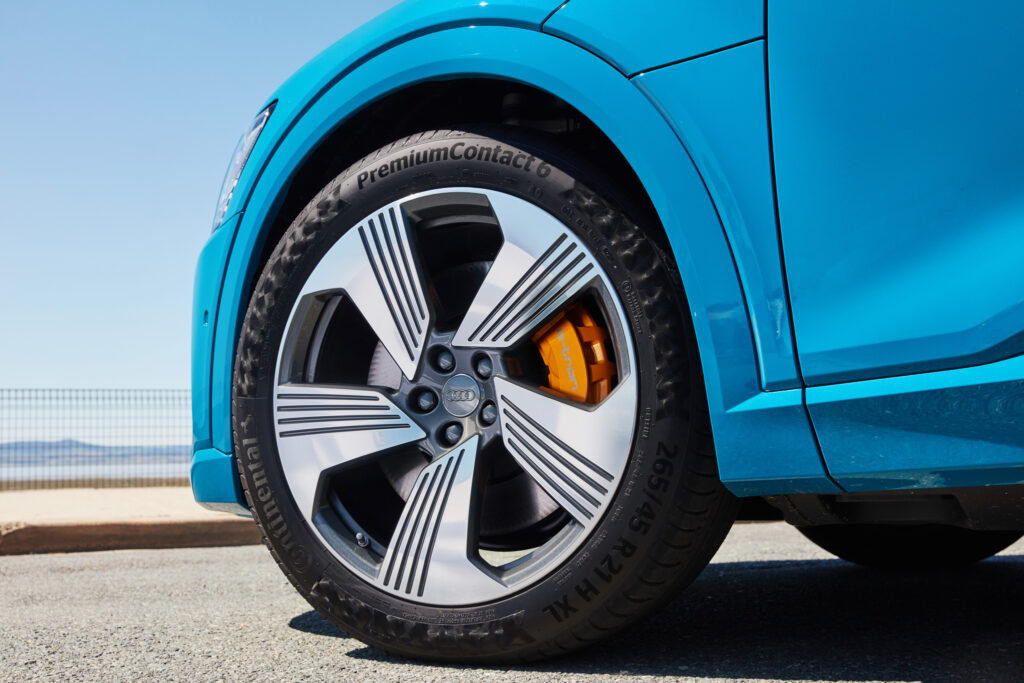
Blind spot warning and Exit Warning – to temporarily delay door opening to stop impacting another vehicle or cyclist – are also included.
Plus there’s a 360-degree camera and rear cross traffic alert.
Tyre pressure monitors and a driver attention function round out the comprehensive safety package.
Verdict
The e-Tron is one of the most convincing electric vehicles on the market, even if it does come with a sizeable electric car price premium. It combines great driving manners with a long list of equipment and great after-sales support for six years of ownership. Having the choice of two body styles and battery/motor combinations adds to its appeal.
Audi e-Tron 50 Quattro specifications
Price: $137,100 (SUV), $148,100 (Sportback), plus on-road costs
Basics: EV, 5 seats, 5 doors, SUV, AWD
Range: 300km (WLTP)
Battery capacity: 71kWh
Battery warranty: 8 years/160,000km
Energy consumption: 23.2-23.6kWh/100km
Motors: 1 front and 1 rear, combined 230kW/540Nm
AC charging: 11kW, Type 2 plug
DC charging: 12-kW, CCS plug
0-100km/h: 6.8 seconds
Audi e-Tron 55 Quattro specifications
Price: $146,100 (SUV), 157,100 (Sportback), plus on-road costs
Basics: EV, 5 seats, 5 doors, SUV, AWD
Range: 400km (WLTP)
Battery capacity: 95kWh
Battery warranty: 8 years/160,000km
Energy consumption: 21.6-23.1kWh/100km
Motors: 1 front and 1 rear 300kW/664Nm
AC charging: 11kW, Type 2 plug
DC charging: 150kW, CCS plug
0-100km/h: 6.6 seconds, 5.7 seconds with “boost” mode

